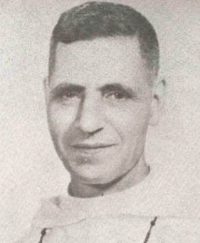I left a gap in my diary. I stopped writing for a while, partly because of fear, partly because of lack of interest. I was afraid these notes would fall into the hands of the police who have been searching houses and persons. Besides, I also had my doubts on the point of the whole thing. But soon, I found myself writing again.
One of the police searches was made at the convent and church of San Sebastian. A group of more than thirty Japanese, some in uniform and others in civilian clothes, came at 2:30 P.M. The eight Recollect Fathers and those from Letran were ordered to come down. The sister at the College in front were taken to the visitors’ room while the people who were found inside the church were herded towards the main doors of the convent. All the people in the neighborhood were ordered tb close their windows and prohibited from looking out.
The Japanese divided themselves into groups, each accompanied by a priest, and they started a thorough search of the convent and the church. For three and a half hours, they looked into every room, and probed every nook and corner, as if looking for a needle or some treasure. They ransacked tables, suitcases, cabinets and papers. Even the Tabernacle was not spared. The priests were harassed by their questions and threats.
What they were looking for, they did not say. We were however suspecting that some malicious individual must have reported that the priests were hiding a radio transmitter. We later gathered from the investigations they made in the different houses in neighborhood that the Japanese got the idea that the church steeples are being used as transmitter antennas through which messages are being sent to the army.
Yesterday and the day before, we witnessed strange and mysterious events. From 8:40 to 11:30 A.M. the day before, and from 4:00 to 6:00 P.M. yesterday, the Japanese police stopped all traffic along Rizal Avenue and Taft Avenue, that is, from north to south of the City. They kept all vehicles and pedestrians away from these two main arteries within about half a kilometer, apparently so that nobody would see what would pass through these streets. We watched from the roof of Letran where we should be able to spot whatever it was that we could expect to find out—perhaps a convoy of soldiers or armaments, but nobody and nothing appeared.
The day before, after waiting for two hours, we saw nothing but a truck with soldiers standing, and half a dozen cars with Japanese flags. As the they passed, the Japanese traffic soldiers who were also at a distance turned their backs, requiring the Filipino policemen to do the same. The practice of turning one’s back is an act of respect in Japan. Yesterday, all I saw was a group of unarmed soldiers, and nobody turned his back.
The people were curious about the significance of these events which nobody saw, and there were fantastic theories about them. The general belief—confirmed by rumors past four days—is that the Japanese general who was in command of the attack in Bataan, had committed harakiri for having failed in his mission, and this was the funeral cortege. There is no official version. Meanwhile, the press is silent about the whole thing.
Personally, I believe that some imperial prince arrived. Some years ago, while I was in Formosa, Prince Chichibu, the brother of the Emperor, arrived, and I witnessed similar circumstances.
